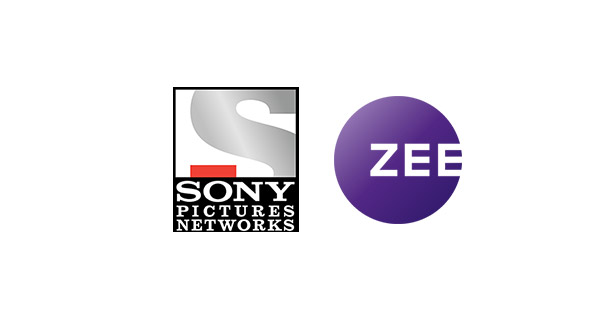Founded by Subhash Chandra more than two decades ago with a single channel in India, Zee Entertainment Enterprises (ZEE) today encompasses a wide portfolio of brands domestically, and an increasingly broad global footprint. As CEO of the international broadcast business at ZEE, Amit Goenka is driving gains around the world with a mix of services, some targeted at the global Indian diaspora and others reaching out to general audiences with both movies and series.
TV ASIA: Tell us about how your North American business has evolved over the last few years.
GOENKA: The U.S. business is one of the most important markets for us. It is growing year on year. We are the largest multicultural broadcaster in the U.S. and have an exclusive relationship with Sling TV. We launched Zee Mundo, our Spanish channel that is targeted at the U.S. Hispanic market, in October 2016 on DishLATINO and we will soon expand this channel to other markets. We have noticed that the Arabic and Hispanic cultures share a close affinity with Indian and Bollywood content. In these markets, there is very little global content coming in besides Hollywood. That is what we are trying to build and capitalize on.
Canada is another big area that we are looking at as South Asians consist of nearly 8 percent of the total population. We will focus on mainstream content targeted at English- and Spanish-speaking audiences. Pay TV is currently a small space, but the advertising space has huge potential for us in Canada.
TV ASIA: Tell us about your new Latin American business.
GOENKA: Zee Mundo gives us a bigger opportunity to exploit some of our existing shows for a completely new market. It’s not just a movie channel. Wherever we’ve entered globally, we done so with a movies offering and then quickly converted it to a more general entertainment series, telenovela kind of format.
TV ASIA: You’ve had a lot of activity in the Middle East and Africa lately.
GOENKA: The Middle East has been a good market for us. Indian content resonates very well with the Arabic people, from a cultural and family point of view. That was the first market where we started experimenting with original shows that are locally produced. We did one in 2014, Parwaaz, and another last year, Khwaabon Ke Darmiyaan, which is doing phenomenally well—it’s beaten all ratings records in the Middle East. We also recently launched an FM radio station. That positions us as one of the only broadcasters who has both television as well as radio, and soon to also be in the digital space. It’s a big market, and it’s been growing for us over the last four years. We intend to continue to invest there. In fact this year we have plans to do an original Arabic series as well, which would be another first for us—producing in the local language for the local audience.
TV ASIA: How is your European business?
GOENKA: Leaving out the U.K., which has a higher concentration [of South Asians], the rest of Europe is very fragmented. There may be 10,000 families in one country, 20,000 in another—it’s difficult to consolidate that. But for Europe, we’ve taken a mainstream strategy. We launched Zee.One [a free-to-air channel for Bollywood films] in Germany. As we did in the U.S. Hispanic market, we conducted research and found they were craving Indian series. We just started to launch our Indian series. I am surprised to find that the series are rating higher than the movies. Germany is a market that has always been exposed to Bollywood to some extent, but never to the series. I’m really happy that our series are being well received and we’re getting daily repeat viewership.
TV ASIA: What gains are you seeing in your program-sales business? And how are you windowing your content in those markets where you also have a channel presence?
GOENKA: Our program-licensing business gave us insight into how well our content does in certain markets. That’s what has helped us to identify markets where we should enter [with our channels]. In terms of windowing, in the markets where we are currently present, we obviously would look at a first window on our platforms before we would syndicate or license to other platforms. In markets that are regulated, like Indonesia or Thailand or China, we syndicate to the main platforms. We have platforms in Indonesia, but we are only on pay; we’re not on FTA because of regulations. So we license our content to the FTA broadcasters before we put it on our own pay platform. It depends on the market. There is no general rule of thumb; it’s market to market.
TV ASIA: How has the ad market been for your channels?
GOENKA: It’s been fairly good. For the South Asian business, our advertising business is growing at about 3 to 5 percent annually. We have seen good growth coming from the Asia-Pacific business because of markets like Bangladesh, Sri Lanka and Myanmar, which have been doing very well in the last few months. That’s been driving our advertising business on the South Asian side. On the mainstream side, we have seen good growth on the Arabic platforms. The U.S. Hispanic, Latin American and German businesses are fairly new, so those will take time. But yes, we’ve seen healthy ad revenues as we launch our series in these markets.
TV ASIA: What are the major challenges facing ZEE’s international business over the next 12 to 18 months? And your greatest opportunities?
GOENKA: I will start with the opportunities. We are looking at new markets. In Europe, we are concentrating very heavily on Poland and France. These two are definitely on our horizon in the next 12 to 18 months. In the Middle East, we’re looking at Egypt, which is potentially a big market. We have already seen good traction on our existing Arabic channels there. We’re looking at a dedicated platform for Egypt in the next 12 to 18 months. If I look at Asia Pacific, we are going with a free-to-air strategy for Thailand and Vietnam in the next three months. For Zee Mundo, we’re looking at Latin America, which is a big push this year. I think we should be distributed in at least four or five of the smaller to medium-size markets in the next 18 months [including Mexico]. And hopefully Brazil in the next 24 to 30 months. Canada is a big focus on the FTA side for the South Asian business. We’re trying to work with the government and the ratings agencies to see how we can get that going. That’s a big opportunity. Of course on the radio side, we started in the Middle East and we’re looking at the U.K. and the U.S. as well. These are some of the immediate opportunities on the horizon.
China, Japan and Indonesia are key markets where regulatory hurdles exist, and we’re trying to see how we can find other ways to enter them with our content. Those challenges will remain. If I look at the Middle East, the market has been down for the last few months and going forward, it may still be down in the coming 9 to 12 months. So it is going to be a challenge for us there, but then I have hopes for markets like Egypt and Morocco. It’s both a hurdle and an opportunity to look at territories beyond Saudi Arabia and some of the other Arabic markets we’ve been focusing on.
TV ASIA: Tell us about your digital strategy. You’re aligned with Sling TV in the U.S. What’s your general approach to direct-to-consumer OTT models internationally?
GOENKA: On the digital side, we have a presence in India and we are looking to take those platforms beyond India in the fourth quarter of this calendar year, around October. That’s when we’ll see our OTT strategy playing out in the global markets, leaving out the U.S., where we have an exclusive relationship with Sling. We have plans to look at an AVOD or freemium kind of model that provides a certain amount of content free of cost, and then some premium content that is not going on our broadcast channels in those markets.
 TVASIA
TVASIA



